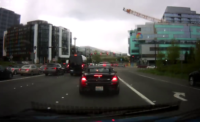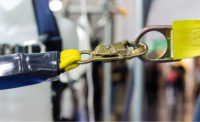Jessie Singer, author of “There Are No Accidents” (Simon & Schuster, 336 pages), works for a nonprofit dedicated to making cities safer for pedestrians and cyclists, but her views of error and accidents go far beyond urban life and cars. She begins with the story of a dear friend who, as a teenager, was struck and killed by a car while bicycling in Manhattan—a starting point for her discussion of accidental death and the ways in which the more powerful in society have benefitted from and promoted the idea that individual errors and mistakes are the reason why so many people die.
Singer’s statistics surprised me, such as this: There were 173,000 accidental deaths in 2019, the latest year for which data was available. Also, one in 23 people in the U.S. will die by accident, she writes, with an annual cost for all injuries and fatalities of more than $1 trillion.
Another revelation in Singer’s book is the work of safety researcher Crystal Eastman, who catalogued how workers died in Pittsburgh in 1907. Singer writes that Eastman “effectively debunked an idea that corporations had been pushing for decades: that careless workers cause workplace accidents. It was the first-ever sociological investigation into the accidental deaths of American laborers.”
Singer’s best section is the discussion of how accident-prone workers were the center of early theories of industrial and public safety. Those ideas ramped up after 1911 with the debut of state workers’ compensation laws, the author writes. “For the first time, accidents born out of a sped-up assembly line or an unventilated coal mine would affect profits,” says Singer. “Accidents suddenly had a price.”
America’s largest corporations responded by launching industry safety campaigns, “and those campaigns focused on changing workers’ behavior by teaching them not to make mistakes,” the author says.
Singer doesn’t go into current thoughts about the role of behavior-based safety and the challenge to it by advocates of the “New View” safety approach. But her book is full of references to Australia-based Sydney Dekker, who, along with other theorists that include Todd Conklin in the U.S., have pioneered and promoted New View safety. It would have been good to see even more material in the book about the application of other New View safety ideas to hospital care and medical errors.
But the universal relevance of the ideas are clear. Just as there is no such thing as an accident or an error-prone worker, there is no such thing in traffic safety as a jaywalker.
My question is: What is the role, if any, of human agency in Singer’s world of peril and pain? She does have an answer, however. Singer writes that she will steer the reader away from “asking questions about personal responsibility and noting the poor judgement you see in other people’s behavior.”
According to the author, “This is not because I believe that poor judgement is absent from accidents or that personal responsibility has never saved a life.” But blaming human error “is at best inconsequential and a largely ineffective answer to the accident problem.”
Singer sees workplaces and work controlled by employers, and the world shaped by powerful interests. Not surprisingly, she sees the redress for power imbalances in terms that go beyond the workplace and the immediate physical environment. Yes, let’s make roads and vehicles and workplaces safer, with automatic braking, fences around every swimming pool and toxic gas sensors, she says. But Singer also advocates for keeping corporate money and influence out of regulatory agencies, ending cost-benefit analysis of regulations and repealing every tort reform law. Think about that last one, whether you are at a big company or operate a small engineering or contracting firm with a liability insurance policy limit of “only” $5 million.
Importantly, Singer adds, stop saying “accident” because “of all the blame and distraction from real causes that comes with it.” For safety professionals, that battle is won: Incident is now used in place of accident, with good reason.






Post a comment to this article
Report Abusive Comment